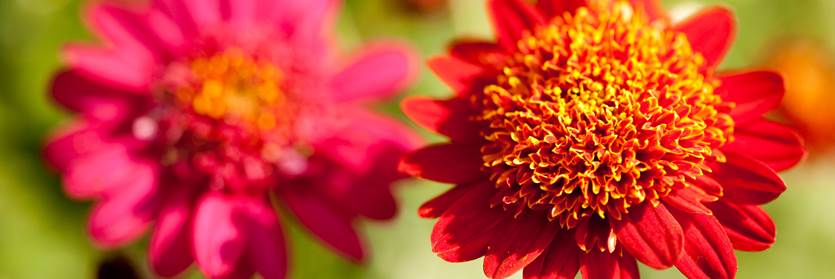Inside The New York Botanical Garden
Ann Rafalko
Posted in Around the Garden on September 22 2011, by Ann Rafalko
Kingsville Boxwood Buxus microphylla ‘Compacta.’ Approximately 55 years old, and 34 years in training in the Ne Tsuranari Style (sinuous raft). This beautiful bonsai is exhibited by Jerome Rocherolle.
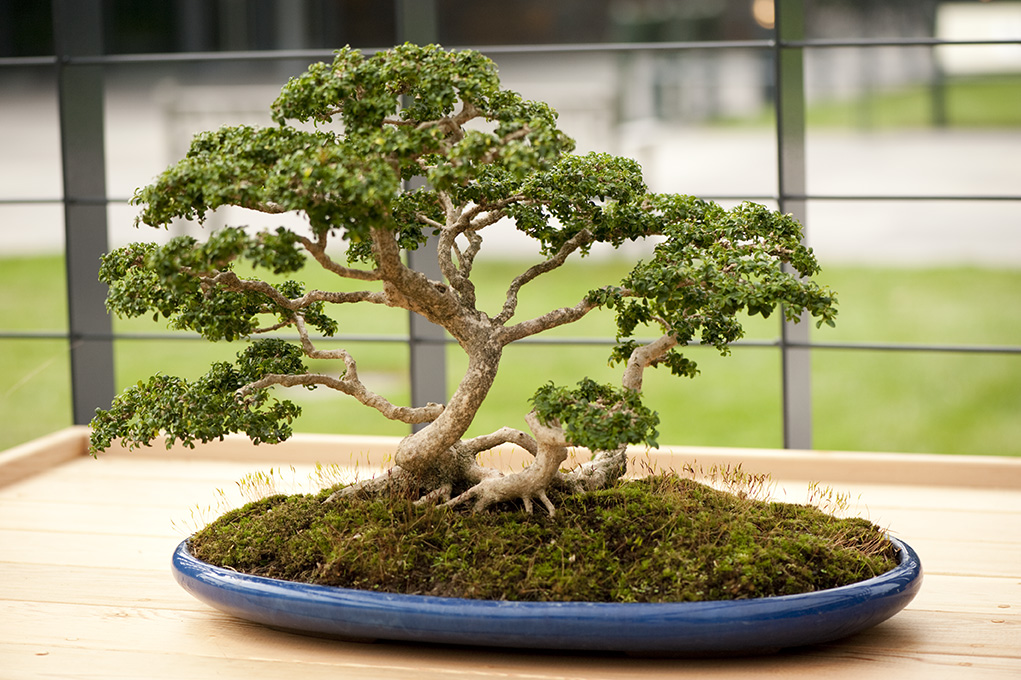
Kingsville Boxwood Buxus microphylla ‘Compacta’ (photo by Ivo M. Vermeulen)
Head below to learn more about how to see this beautiful bonsai.
Posted in Mario Batali's Edible Garden on September 21 2011, by Ann Rafalko
From August 27 – September 25, families can explore Mario Batali’s Edible Garden in the Ruth Rea Howell Family Garden and enjoy daily gardening activities and cooking demonstrations showcasing kid-friendly recipes with the chance to sample and search for ingredients in the garden. We are posting the recipes from Mario Batali’s Edible Garden here on the NYBG blog, Plant Talk, so check back often.
Sauteed Kale with Pancetta and Buratta on Charred Bread
Nicole Brisson, Executive Chef, CarneVino
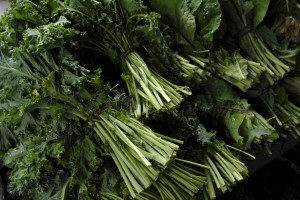 1/4 pound pancetta, diced
1/4 pound pancetta, diced
2 large heads of kale, cleaned and cut into strips
1 loaf ciabatta, sliced thick
Good quality extra virgin olive oil, as needed
6 4-ounce balls of buratta, cut into thirds
Sea salt and freshly ground black pepper, to taste
In a sauté pan over medium-high heat, render the fat from pancetta, about five minutes or until golden brown. Add kale to the pan and cook until hot and tender. Season with salt and pepper, to taste.
On a flattop or grill, char bread slices and drizzle with good olive oil.
Slice the buratta, place on the warm charred bread, top with kale and serve immediately.
Posted in Photography on September 21 2011, by Ann Rafalko
Cedrus atlantica ‘Glauca.’ Approximately 25 years old, and 18 years in training in the Yos ue Style (forest). This beautiful bonsai is exhibited by Saeko Oshiro.
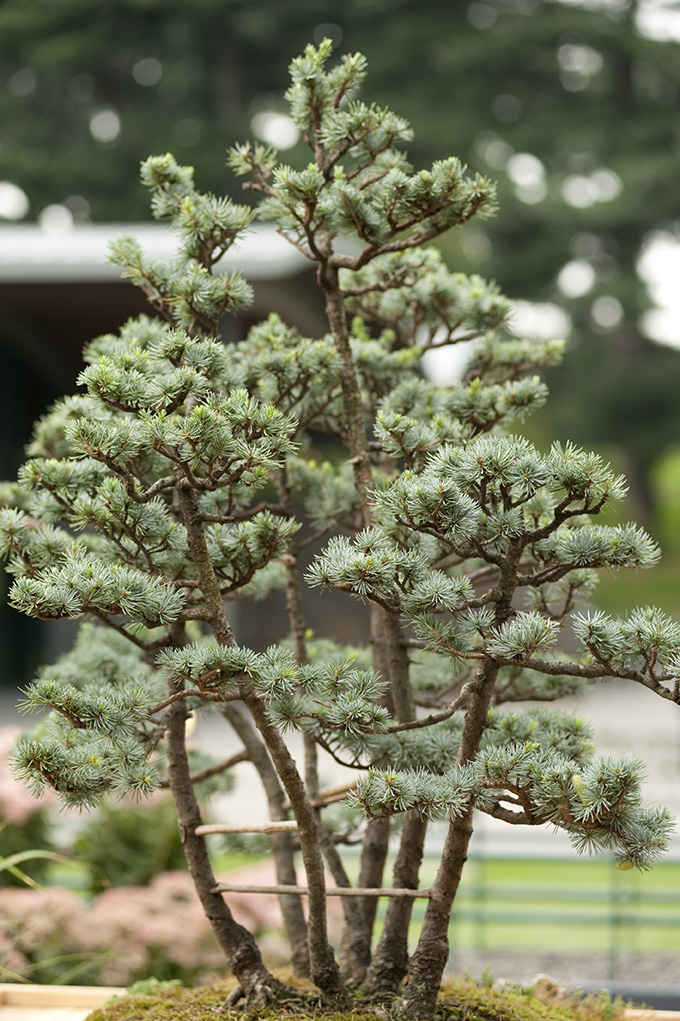
Blue Atlas Cedar Cedrus atlantica ‘Glauca’(photo by Ivo M. Vermeulen)
Head below to learn more about how to see this beautiful bonsai.
Posted in Photography on September 20 2011, by Ann Rafalko
Carpinus turczaninovii. Approximately 20-40 years old, and 18 years in training in the Yos ue Style (forest). This beautiful bonsai is exhibited by Jerome Rocherolle.
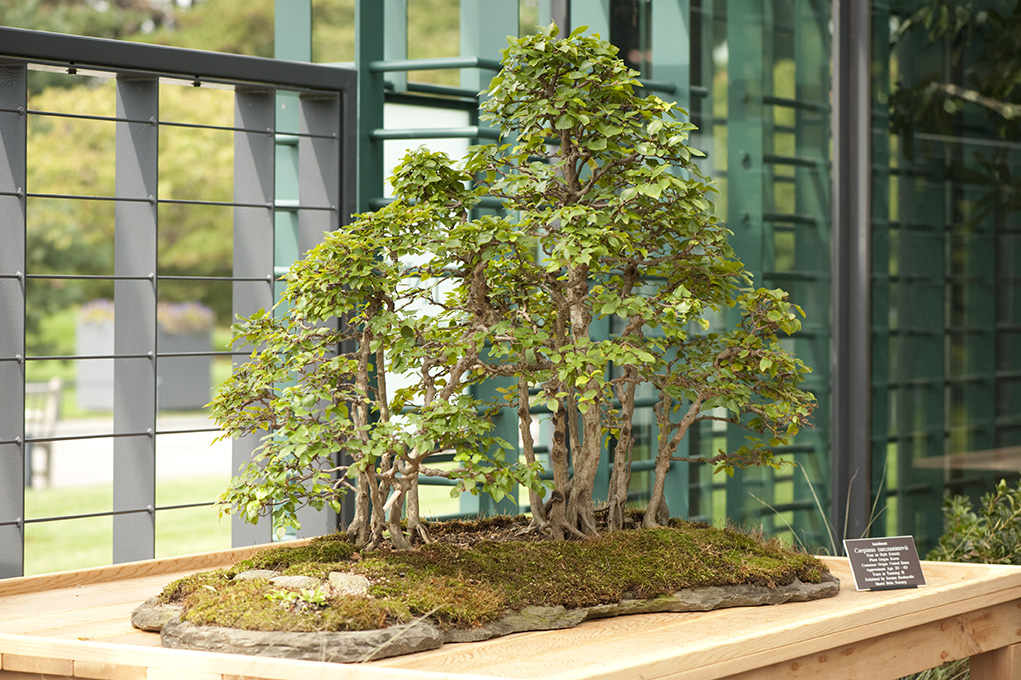
Hornbeam bonsai Carpinus turczaninovii (photo by Ivo M. Vermeulen)
Head below to learn more about how to see this beautiful bonsai.
Posted in Mario Batali's Edible Garden on September 19 2011, by Ann Rafalko
From August 27 – September 25, families can explore Mario Batali’s Edible Garden in the Ruth Rea Howell Family Garden and enjoy daily gardening activities and cooking demonstrations showcasing kid-friendly recipes with the chance to sample and search for ingredients in the garden. We are posting the recipes from Mario Batali’s Edible Garden here on the NYBG blog, Plant Talk, so check back often.
Fresh Fava Beans with Lonza and Pecorino Romano
Zach Allen, Executive Chef, B&B Ristorante
2 pounds fresh fava beans, shelled
A handful of fava leaves (optional)
1/4 cup lemon juice
Pinch of lemon zest
1/2 cup extra virgin olive oil
3 ounces pecorino romano, shaved
Sea salt and freshly ground black pepper, to taste
18 slices Lonza (cured pork loin)
Blanch the fava beans: cook in boiling water, shock in ice water and drain thoroughly.
Make a quick vinaigrette by combining the lemon juice, zest and olive oil. Season with salt and pepper, to taste.
Toss the blanched fava beans and leaves with the vinaigrette. Layer the salad with slices of Lonza and top with shaved pecorino cheese. Finish with freshly ground black pepper and serve.
Posted in Photography on September 19 2011, by Ann Rafalko
Welcome to this tranquil, beautiful new exhibition in the historic Enid A. Haupt Conservatory!
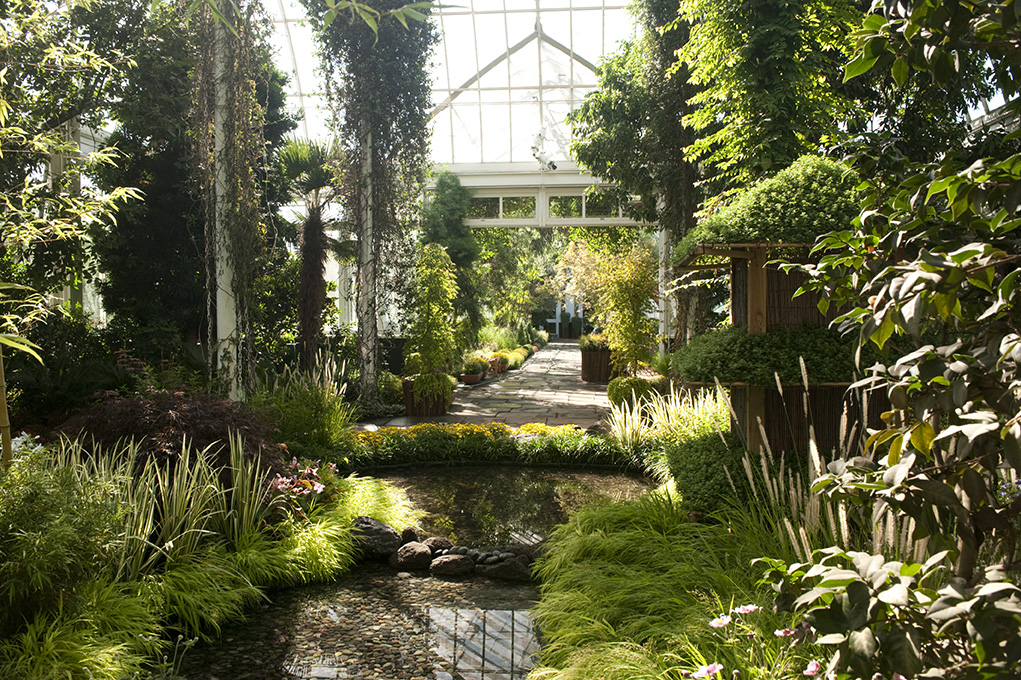
Photo by Ivo M. Vermeulen
Posted in Photography on September 17 2011, by Ann Rafalko

Rosa ‘Queen of the Musks’
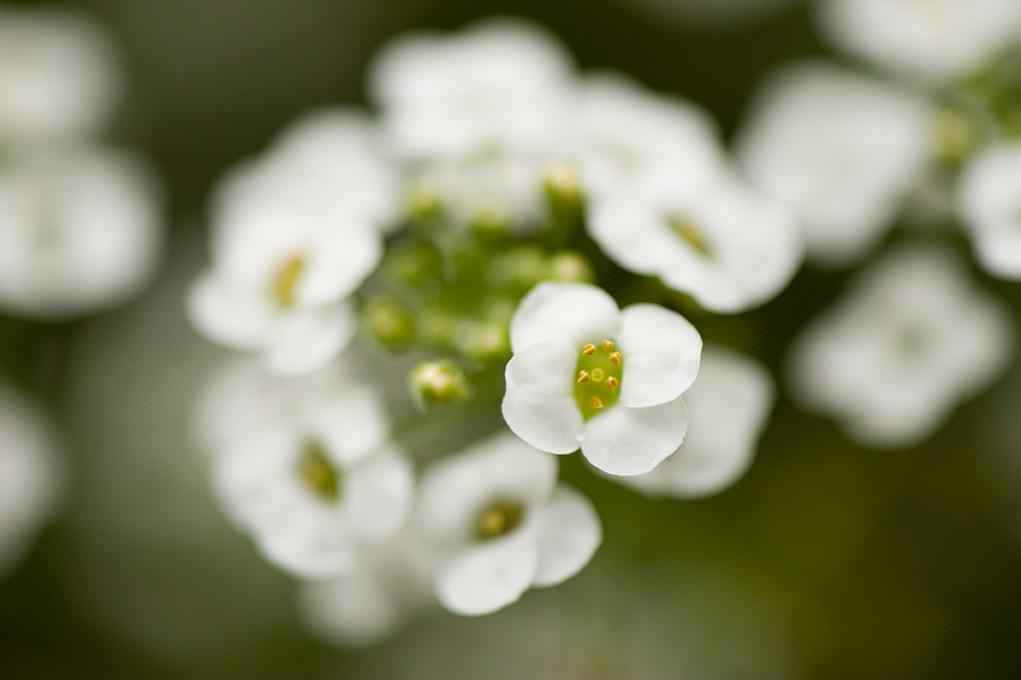
Lobularia ‘Snow Princess’
Photos by Ivo M. Vermeulen
Posted in Behind the Scenes, Exhibitions on September 16 2011, by Ann Rafalko
Today is the Member’s Preview Day of our latest exhibition, Fall Flowers of Japan. And while entrance to the exhibition today is Members-only, we figured we would offer a different kind of sneak peek to our friends in cyberspace. As part of Fall Flowers of Japan, world-renowned ikebana master Tetsunori Kawana has created a gorgeous installation–TANJOU, which means rebirth–in the pool of the Enid A. Haupt Conservatory’s Palm Dome. TANJOU is created of materials gathered from Garden grounds in the aftermath of Tropical Storms Irene and Lee.
Head below to see a slideshow of the creation and installation of TANJOU.
Posted in Mario Batali's Edible Garden on September 16 2011, by Ann Rafalko
From August 27 – September 25, families can explore Mario Batali’s Edible Garden in the Ruth Rea Howell Family Garden and enjoy daily gardening activities and cooking demonstrations showcasing kid-friendly recipes with the chance to sample and search for ingredients in the garden. We are posting the recipes from Mario Batali’s Edible Garden here on the NYBG blog, Plant Talk, so check back often.
Spaghetti with Escarole, Guanciale, and White Beans
Matt Molina, Executive Chef, Osteria Mozza
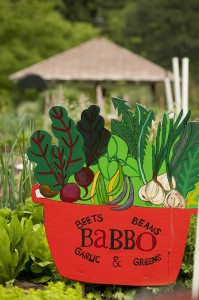 4 tablespoons extra virgin olive oil
4 tablespoons extra virgin olive oil
8 ounces guanciale or pancetta, cut into 1/4-inch thick, 2 inch long batons
6 cloves garlic, thinly sliced
1 teaspoon red pepper flakes
1 cup cooked, drained, white beans
2 heads escarole, cut into 2-inch pieces, washed, and spun dry
1 pound spaghetti
2 tablespoons pecorino romano, grated, plus a wedge for grating
2 tablespoons Parmigiano Reggiano, grated
4 tablespoons toasted breadcrumbs
Bring 6 quarts of water to a boil in a large pot, and add 6 tablespoons salt.
Meanwhile, in a 14-inch sauté pan, heat the guanciale over low heat. Cook slowly until the fat has been rendered and the meat is golden brown, about 5 minutes. Add garlic and red pepper flakes and cook gently until garlic is golden brown, about 1 minute. Turn off the heat, add the white beans and a half cup of the boiling water.
When the water comes to a boil, add the escarole and cook for 1 minute. Using a slotted spoon, remove the wilted escarole from the water and add to the pan with guanciale.
When the water is boiling, add the spaghetti and cook until just al dente.
About 1 minute before the pasta is done, place the sauce over high heat. Immediately add pasta to the pan with the sauce, reserving 1 cup of the pasta water. Cook the pasta with the sauce for 2 minutes, stirring with a rubber spatula or tongs to coat the pasta, adding some of the reserved pasta water if the pasta so that the pasta is slippery and glistening. Remove from heat and stir in the grated Parmigiano Reggiano and pecorino romano. Add the olive oil, stirring and shaking the pan to emulsify the sauce.
Use tongs to lift the spaghetti out of the pan and onto the center of each four plates, dividing the pasta evenly, and twirling it as it falls onto the plate to form a tight mound. Spoon any sauce left in the pan over the pasta and use a microplane or fine grater to grate a light layer of pecorino romano over each plate. Sprinkle a tablespoon of toasted breadcrumbs over each plate and serve.
Posted in Photography on September 16 2011, by Ann Rafalko
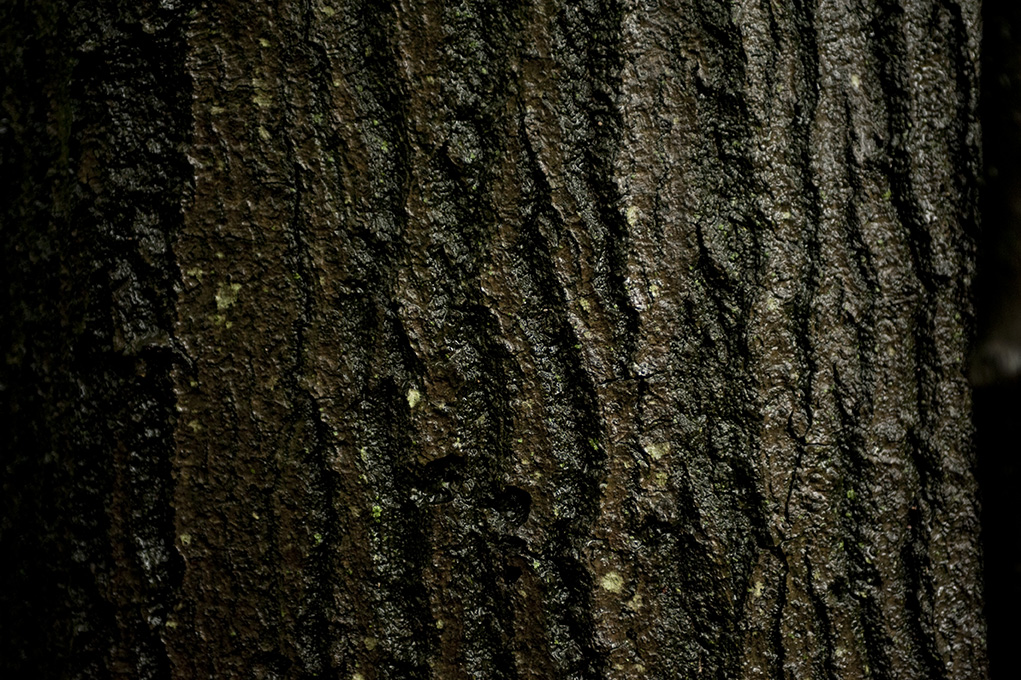
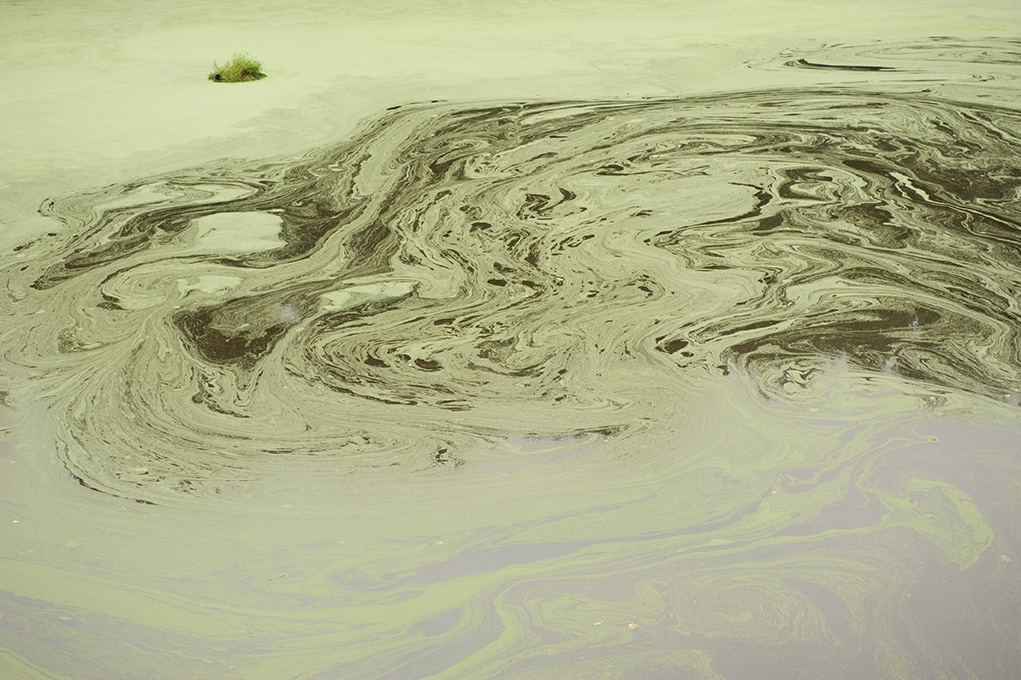
Photos by Ivo M. Vermeulen
